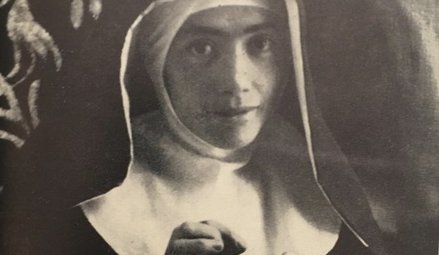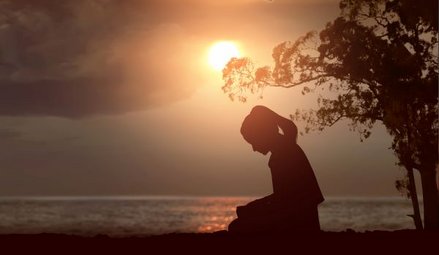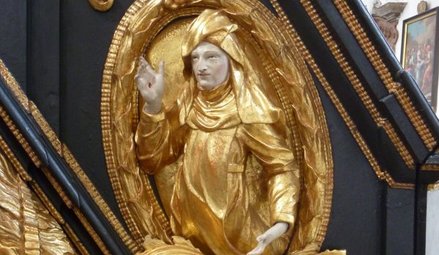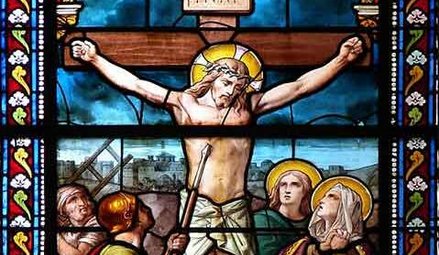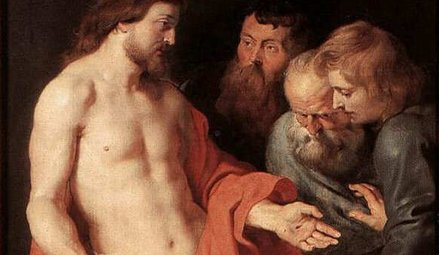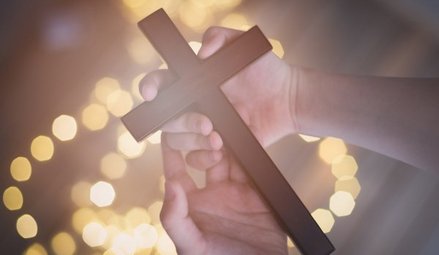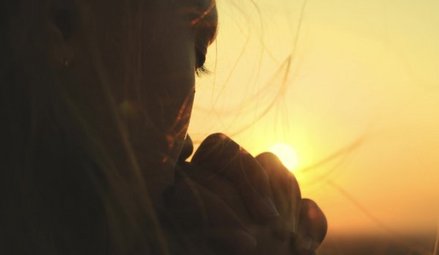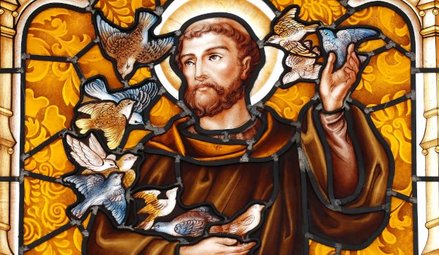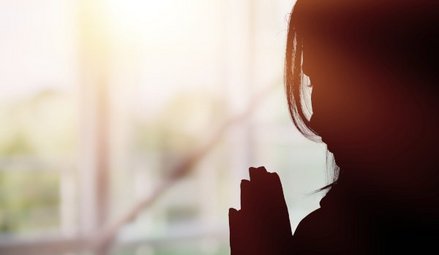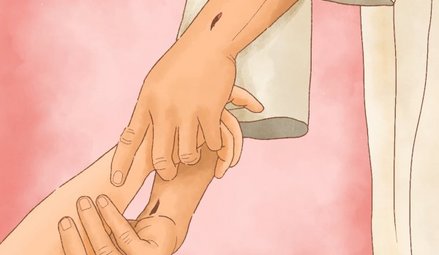- By theme
- Jesus
- The many proofs of Christ’s resurrection
- Saint Thomas Aquinas: God gave all the divine proofs we needed to believe
- The surpassing power of Christ's word
- Lewis’s trilemma: a proof of Jesus’s divinity
- God saves: the power of the holy name of Jesus
- Jesus spoke and acted as God's equal
- Jesus' divinity is actually implied in the Koran
- Jesus came at the perfect time of history
- Rabbinical sources testify to Jesus' miracles
- Mary
- The Church
- The Bible
- The authors of the Gospels were either eyewitnesses or close contacts of those eyewitnesses
- Onomastics support the historical reliability of the Gospels
- The New Testament was not altered
- The New Testament is the best-attested manuscript of Antiquity
- The Gospels were written too early after the facts to be legends
- Archaeological finds confirm the reliability of the New Testament
- The criterion of embarrassment proves that the Gospels tell the truth
- The dissimilarity criterion strengthens the case for the historical reliability of the Gospels
- 84 details in Acts verified by historical and archaeological sources
- The unique prophecies that announced the Messiah
- The time of the coming of the Messiah was accurately prophesied
- The prophet Isaiah's ultra accurate description of the Messiah's sufferings
- Daniel's "Son of Man" is a portrait of Christ
- The Apostles
- The martyrs
- The protomartyr Saint Stephen (d. 31)
- Polycarp, bishop of Smyrna, disciple of John and martyr (d. 155)
- Saint Blandina and the Martyrs of Lyon: the fortitude of faith (177 AD)
- Saint Agatha stops a volcano from destroying the city of Catania (d. 251)
- Saint Lucy of Syracuse, virgin and martyr for Christ (d. 304)
- Thomas More: “The king’s good servant, but God’s first”
- The martyrdom of Paul Miki and his companions (d. 1597)
- The martyrs of Angers and Avrillé (1794)
- The Martyrs of Compiègne (1794)
- The Vietnamese martyrs Father Andrew Dung-Lac and his 116 companions (17th-19th centuries)
- He braved torture to atone for his apostasy (d. 1818)
- Blaise Marmoiton: the epic journey of a missionary to New Caledonia (d. 1847)
- José Luis Sanchez del Rio, martyred at age 14 for Christ the King (d. 1928)
- Saint Maximilian Kolbe, Knight of the Immaculate (d. 1941)
- The monks
- Saint Anthony of the Desert, a father of monasticism (d. 356)
- Saint Benedict, father of Western monasticism (d. 550)
- Saint Bruno the Carthusian (d.1101): the miracle of a hidden life
- Blessed Angelo Agostini Mazzinghi: the Carmelite with flowers pouring from his mouth (d. 1438)
- Monk Abel of Valaam's accurate prophecies about Russia (d. 1841)
- The more than 33,000 miracles of Saint Charbel Maklouf (d. 1898)
- Saint Pio of Pietrelcina (d. 1968): How God worked wonders through "a poor brother who prays"
- The surprising death of Father Emmanuel de Floris (d. 1992)
- The prophecies of Saint Paisios of Mount Athos (d. 1994)
- The saints
- Saints Anne and Joachim, parents of the Virgin Mary (19 BC)
- Saint Nazarius, apostle and martyr (d. 68 or 70)
- Ignatius of Antioch: successor of the apostles and witness to the Gospel (d. 117)
- Saint Gregory the Miracle-Worker (d. 270)
- Saint Martin of Tours: patron saint of France, father of monasticism in Gaul, and the first great leader of Western monasticism (d. 397)
- Saint Lupus, the bishop who saved his city from the Huns (d. 623)
- Saint Dominic of Guzman (d.1221): an athlete of the faith
- Saint Francis, the poor man of Assisi (d. 1226)
- Saint Anthony of Padua: "everyone’s saint"
- Saint Rose of Viterbo or How prayer can transform the world (d. 1252)
- Saint Simon Stock receives the scapular of Mount Carmel from the hands of the Virgin Mary
- The unusual boat of Saint Basil of Ryazan
- The extraordinary conversion of Michelina of Pesaro
- Saint Peter Thomas (d. 1366): a steadfast trust in the Virgin Mary
- Saint Rita of Cascia: hoping against all hope
- Saint Anthony Mary Zaccaria, physician of bodies and souls (d. 1539)
- Saint Ignatius of Loyola (d. 1556): "For the greater glory of God"
- Brother Alphonsus Rodríguez, SJ: the "holy porter" (d. 1617)
- Martin de Porres returns to speed up his beatification (d. 1639)
- Virginia Centurione Bracelli: When God is the only goal, all difficulties are overcome (d.1651)
- Seraphim of Sarov (1759-1833): the purpose of the Christian life is to acquire the Holy Spirit
- Bernadette Soubirous, the shepherdess who saw the Virgin Mary (1858)
- Saint John Vianney (d. 1859): the global fame of a humble village priest
- Gabriel of Our Lady of Sorrows, the "Gardener of the Blessed Virgin" (d. 1862)
- Father Gerin, the holy priest of Grenoble (1863)
- Blessed Francisco Palau y Quer: a lover of the Church (d. 1872)
- Saints Louis and Zelie Martin, the parents of Saint Therese of Lisieux (d. 1894 and 1877)
- The supernatural maturity of Francisco Marto, “contemplative consoler of God” (d. 1919)
- Saint Faustina, apostle of the Divine Mercy (d. 1938)
- Brother Marcel Van (d.19659): a "star has risen in the East"
- Doctors
- The mystics
- Lutgardis of Tongeren and the devotion to the Sacred Heart
- Saint Angela of Foligno (d. 1309) and "Lady Poverty"
- Saint John of the Cross: mystic, reformer, poet, and universal psychologist (+1591)
- Blessed Anne of Jesus: a Carmelite nun with mystical gifts (d.1621)
- Catherine Daniélou: a mystical bride of Christ in Brittany
- Saint Margaret Mary sees the "Heart that so loved mankind"
- Mother Yvonne-Aimée of Jesus' predictions concerning the Second World War (1922)
- Sister Josefa Menendez, apostle of divine mercy (d. 1923)
- Edith Royer (d. 1924) and the Sacred Heart Basilica of Montmartre
- Rozalia Celak, a mystic with a very special mission (d. 1944)
- Visionaries
- Saint Perpetua delivers her brother from Purgatory (203)
- María de Jesús de Ágreda, abbess and friend of the King of Spain
- Discovery of the Virgin Mary's house in Ephesus (1891)
- Sister Benigna Consolata: the "Little Secretary of Merciful Love" (d. 1916)
- Berthe Petit's prophecies about the two world wars (d. 1943)
- Maria Valtorta saw only one pyramid at Giza in her visions... and she was right! (1944)
- The 700 extraordinary visions of the Gospel received by Maria Valtorta (d. 1961)
- The amazing geological accuracy of Maria Valtorta's writings (d. 1961)
- Maria Valtorta's astronomic observations consistent with her dating system
- Discovery of an ancient princely house in Jerusalem, previously revealed to a mystic (d. 1961)
- The popes
- The great witnesses of the faith
- Saint Augustine's conversion: "Why not this very hour make an end to my uncleanness?" (386)
- Thomas Cajetan (d. 1534): a life in service of the truth
- Madame Acarie, "the servant of the servants of God" (d. 1618)
- Blaise Pascal (d.1662): Biblical prophecies are evidence
- Jacinta, 10, offers her suffering to save souls from hell (d. 1920)
- Father Jean-Édouard Lamy: "another Curé of Ars" (d. 1931)
- Christian civilisation
- The depth of Christian spirituality
- John of the Cross' Path to perfect union with God based on his own experience
- The dogma of the Trinity: an increasingly better understood truth
- The incoherent arguments against Christianity
- The "New Pentecost": modern day, spectacular outpouring of the Holy Spirit
- The Christian faith explains the diversity of religions
- Cardinal Pierre de Bérulle (d.1629) on the mystery of the Incarnation
- Christ's interventions in history
- Marian apparitions and interventions
- The Life-giving Font of Constantinople
- Our Lady of Virtues saves the city of Rennes in Bretagne (1357)
- Mary stops the plague epidemic at Mount Berico (1426)
- Cotignac: the first apparitions of the Modern Era (1519)
- Savona: supernatural origin of the devotion to Our Lady of Mercy (1536)
- The Virgin Mary delivers besieged Christians in Cusco, Peru
- The victory of Lepanto and the feast of Our Lady of the Rosary (1571)
- The apparitions to Brother Fiacre (1637)
- The “aldermen's vow”, or the Marian devotion of the people of Lyon (1643)
- Our Lady of Nazareth in Plancoët, Brittany (1644)
- Our Lady of Laghet (1652)
- Saint Joseph’s apparitions in Cotignac, France (1660)
- Heaven confides in a shepherdess of Le Laus (1664-1718)
- Zeitoun, a two-year miracle (1968-1970)
- The Holy Name of Mary and the major victory of Vienna (1683)
- Heaven and earth meet in Colombia: the Las Lajas shrine (1754)
- "Consecrate your parish to the Immaculate Heart of Mary" (1836)
- At La Salette, Mary wept in front of the shepherds (1846)
- Our Lady of Champion, Wisconsin: the first and only approved apparition of Mary in the US (1859)
- Gietrzwald apparitions: heavenly help to a persecuted minority
- The silent apparition of Knock Mhuire in Ireland (1879)
- Mary "Abandoned Mother" appears in a working-class district of Lyon, France (1882)
- The thirty-three apparitions of the Virgin Mary in Beauraing (1932)
- "Our Lady of the Poor" appears eight times in Banneux (1933)
- Fontanelle-Montichiari apparitions of Our Lady "Rosa Mystica" (1947)
- Zeitoun apparitions
- The Virgin Mary comes to France's rescue by appearing at L'Ile Bouchard (1947)
- Maria Esperanza Bianchini and Mary, Mary, Reconciler of Peoples and Nations (1976)
- Luz Amparo and the El Escorial apparitions
- The extraordinary apparitions of Medjugorje and their worldwide impact
- The Virgin Mary prophesied the 1994 Rwandan genocide (1981)
- Our Lady of Soufanieh's apparition and messages to Myrna Nazzour (1982)
- The Virgin Mary heals a teenager, then appears to him dozens of times (1986)
- Seuca, Romania: apparitions and pleas of the Virgin Mary, "Queen of Light" (1995)
- Angels and their manifestations
- Mont Saint-Michel: Heaven watching over France
- Angels give a supernatural belt to the chaste Thomas Aquinas (1243)
- The constant presence of demons and angels in the life of St Frances of Rome (d. 1440)
- Mother Yvonne-Aimée escapes from prison with the help of an angel (1943)
- Saved by Angels: The Miracle on Highway 6 (2008)
- Exorcisms in the name of Christ
- A wave of charity unique in the world
- Saint Angela Merici: Christ came to serve, not to be served (d. 1540)
- Saint John of God: a life dedicated to the care of the poor, sick and those with mental disorders (d. 1550)
- Saint Camillus de Lellis, reformer of hospital care (c. 1560)
- Blessed Alix Le Clerc, encouraged by the Virgin Mary to found schools (d. 1622)
- Saint Vincent de Paul (d. 1660), apostle of charity
- Marguerite Bourgeoys, Montreal's first teacher (d. 1700)
- Frédéric Ozanam, inventor of the Church's social doctrine (d. 1853)
- Damian of Molokai: a leper for Christ (d. 1889)
- Pier Giorgio Frassati (d.1925): heroic charity
- Saint Dulce of the Poor, the Good Angel of Bahia (d. 1992)
- Mother Teresa of Calcutta (d. 1997): an unshakeable faith
- Heidi Baker: Bringing God's love to the poor and forgotten of the world
- Amazing miracles
- The miracles of Saint Anthony of Padua (d. 1231)
- Saint Philip Neri calls a teenager back to life (1583)
- Saint Francis de Sales brings back to life a victim of drowning (1623)
- Saint John Bosco and the promise kept beyond the grave (1839)
- The day the sun danced at Fatima (1917)
- Pius XII and the miracle of the sun at the Vatican (1950)
- When Blessed Charles de Foucauld saved a young carpenter named Charle (2016)
- Reinhard Bonnke: 89 million conversions (d. 2019)
- Miraculous cures
- The royal touch: the divine thaumaturgic gift granted to French and English monarchs (11th-19th centuries)
- With 7,500 cases of unexplained cures, Lourdes is unique in the world (1858-today)
- Our Lady at Pellevoisin: "I am all merciful" (1876)
- Mariam, the "little thing of Jesus": a saint from East to West (d.1878)
- Gemma Galgani: healed to atone for sinners' faults (d. 1903)
- The miraculous cure of Blessed Maria Giuseppina Catanea
- The extraordinary healing of Alice Benlian in the Church of the Holy Cross in Damascus (1983)
- The approved miracle for the canonization of Juan Diego Cuauhtlatoatzin (1990)
- Healed by St Charbel Makhlouf, her scars bleed each month for the benefit of unbelievers (1993)
- The miracle that led to Brother André's canonisation (1999)
- Bruce Van Natta's intestinal regrowth: an irrefutable miracle (2007)
- Manouchak, operated on by Saint Charbel (2016)
- How Maya was cured from cancer at Saint Charbel's tomb (2018)
- Preserved bodies of the saints
- Dying in the odour of sanctity
- The body of Saint Cecilia found incorrupt (d. 230)
- Stanislaus Kostka's burning love for God (d. 1568)
- Blessed Antonio Franco, bishop and defender of the poor (d. 1626)
- The incorrupt body of Marie-Louise Nerbollier, the visionary from Diémoz (d. 1910)
- The great exhumation of Saint Charbel (1950)
- Bilocations
- Inedias
- Levitations
- Lacrimations and miraculous images
- Saint Juan Diego's tilma (1531)
- The Rue du Bac apparitions of the Virgin Mary to St. Catherine Labouré (Paris, 1830)
- Mary weeps in Syracuse (1953)
- Teresa Musco (d.1976): salvation through the Cross
- Soufanieh: A flow of oil from an image of the Virgin Mary, and oozing of oil from the face and hands of Myrna Nazzour (1982)
- The Saidnaya icon exudes a wonderful fragrance (1988)
- Our Lady weeps in a bishop's hands (1995)
- Stigmates
- The venerable Lukarda of Oberweimar shares her spiritual riches with her convent (d. 1309)
- Blessed Maria Grazia Tarallo, mystic and stigmatist (d. 1912)
- Saint Padre Pio: crucified by Love (1918)
- Elena Aiello: "a Eucharistic soul"
- A Holy Triduum with a Syrian mystic, witnessing the sufferings of Christ (1987)
- A Holy Thursday in Soufanieh (2004)
- Eucharistic miracles
- Lanciano: the first and possibly the greatest Eucharistic miracle (750)
- A host came to her: 11-year-old Imelda received Communion and died in ecstasy (1333)
- Faverney's hosts miraculously saved from fire
- A tsunami recedes before the Blessed Sacrament (1906)
- Buenos Aires miraculous host sent to forensic lab, found to be heart muscle (1996)
- Relics
- The Veil of Veronica, known as the Manoppello Image
- For centuries, the Shroud of Turin was the only negative image in the world
- The Holy Tunic of Argenteuil's fascinating history
- Saint Louis (d. 1270) and the relics of the Passion
- The miraculous rescue of the Shroud of Turin (1997)
- A comparative study of the blood present in Christ's relics
- Jews discover the Messiah
- Francis Xavier Samson Libermann, Jewish convert to Catholicism (1824)
- Our Lady of the Miraculous Medal and the conversion of Alphonse Ratisbonne (1842)
- Max Jacob: a liberal gay Jewish artist converts to Catholicism (1909)
- Edith Stein - Saint Benedicta of the Cross: "A daughter of Israel who, during the Nazi persecutions, remained united with faith and love to the Crucified Lord, Jesus Christ, as a Catholic, and to her people as a Jew"
- Patrick Elcabache: a Jew discovers the Messiah after his mother is miraculously cured in the name of Jesus
- Cardinal Aron Jean-Marie Lustiger (d. 2007): Chosen by God
- Muslim conversions
- Buddhist conversions
- Atheist conversions
- The conversion of an executioner during the Terror (1830)
- God woos a poet's heart: the story of Paul Claudel's conversion (1886)
- Dazzled by God: Madeleine Delbrêl's story (1924)
- C.S. Lewis, the reluctant convert (1931)
- The day André Frossard met Christ in Paris (1935)
- MC Solaar's rapper converts after experiencing Jesus' pains on the cross
- Father Sébastien Brière, converted at Medjugorje (2003)
- Franca Sozzani, the "Pope of fashion" who wanted to meet the Pope (2016)
- Testimonies of encounters with Christ
- Near-death experiences (NDEs) confirm Catholic doctrine on the Four Last Things
- The NDE of Saint Christina the Astonishing, a source of conversion to Christ (1170)
- Jesus audibly calls Alphonsus Liguori to follow him (1723)
- Blessed Dina Bélanger (d. 1929): loving God and letting Jesus and Mary do their job
- Gabrielle Bossis: He and I
- André Levet's conversion in prison
- Journey between heaven and hell: a "near-death experience" (1971)
- Alicja Lenczewska: conversations with Jesus (1985)
- Vassula Ryden and the "True Life in God" (1985)
- Nahed Mahmoud Metwalli: from persecutor to persecuted (1987)
- The Bible verse that converted a young Algerian named Elie (2000)
- Invited to the celestial court: the story of Chantal (2017)
- Providential stories
- The superhuman intuition of Saint Pachomius the Great
- Germanus of Auxerre's prophecy about Saint Genevieve's future mission, and protection of the young woman (446)
- Seven golden stars reveal the future location of the Grande Chartreuse Monastery (1132)
- The supernatural reconciliation of the Duke of Aquitaine (1134)
- Joan of Arc: "the most beautiful story in the world"
- John of Capistrano saves the Church and Europe (1456)
- A celestial music comforts Elisabetta Picenardi on her deathbed (d. 1468)
- Gury of Kazan: freed from his prison by a "great light" (1520)
- The strange adventure of Yves Nicolazic (1623)
- Julien Maunoir miraculously learns Breton (1626)
- Pierre de Keriolet: with Mary, one cannot be lost (1636)
- How Korea evangelized itself (18th century)
- The prophetic poem about John Paul II (1840)
- Don Bosco's angel dog: Grigio (1854)
- Thérèse of Lisieux saved countless soldiers during the Great War
- Lost for over a century, a Russian icon reappears (1930)
- In 1947, a rosary crusade liberated Austria from the Soviets (1946-1955)
- The discovery of the tomb of Saint Peter in Rome (1949)
- He should have died of hypothermia in Soviet jails (1972)
- God protects a secret agent (1975)
- Flowing lava stops at church doors (1977)
- A protective hand saved John Paul II and led to happy consequences (1981)
- Mary Undoer of Knots: Pope Francis' gift to the world (1986)
- Edmond Fricoteaux's providential discovery of the statue of Our Lady of France (1988)
- The Virgin Mary frees a Vietnamese bishop from prison (1988)
- The miracles of Saint Juliana of Nicomedia (1994)
- Global launch of "Pilgrim Virgins" was made possible by God's Providence (1996)
- Syrian Monastery shielded from danger multiple times (2011-2020)
- Jesus
- Who are we?
- Make a donation
TOUTES LES RAISONS DE CROIRE
Stigmates
n°303
Soufanieh, a suburb of Damascus (Syria)
Holy Thursday and Good Friday 1987
A Holy Triduum with a Syrian mystic, witnessing the sufferings of Christ
On 17 April 1987, Christians in the Middle East were preparing to celebrate the Resurrection of Christ together, since that year Easter fell on the same day for Catholics and Orthodox. But for the past five years, Jesus and Mary had been appearing in Soufanieh, a Christian district of Damascus, with important messages delivered through a mystic called Myrna Nazzour, about the need for Christian unity. These messages were accompanied by extraordinary phenomena: visions, oil oozing from a paper print of an icon, oil oozing from Myrna's hands and body on numerous occasions and, finally, her stigmatisation.
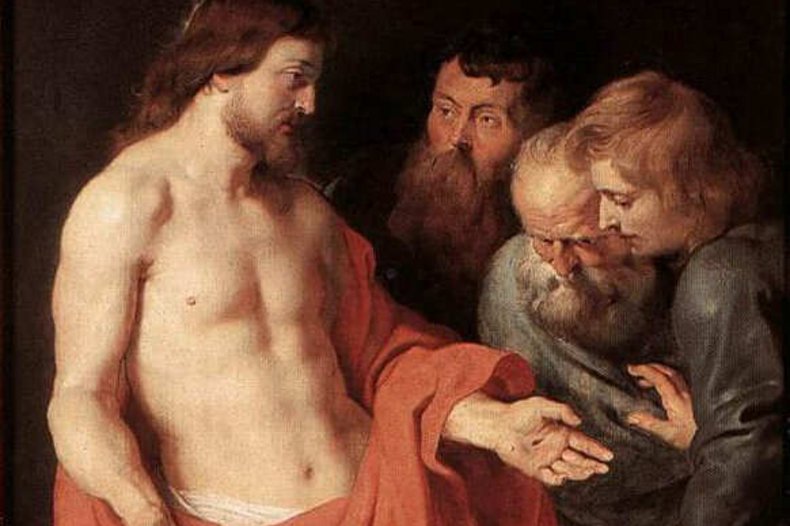
The incredulity of Saint Thomas, painted by Peter Paul Rubens in 1613. Preserved in the Royal Museum of Fine Arts in Antwerp, Belgium.
Les raisons d'y croire :
- In April 1987, the events at Soufanieh had already been occurring, observed and documented for five years without anyone questioning their veracity or being able to offer a scientific explanation.
- Our family was supposed to fly to Aleppo for Easter, but our plane lwas diverted to Damascus instead. There, a priest friend who accompanied the visionary invited us to the Nazzours' house.
- The atmosphere in Myrna's house was far from hysterical: despite the compact crowd, everyone was quiet or spoke softly, praying side by side, including the Muslims.
- Myrna lay in her room, where the presence of two doctors, as well as her family and priests, ensured a detailed account of what was taking place.
- The events were also filmed by a cameraman, Nabil Choukair, and photographed by a number of people, including one of our sons, equipped with a Polaroid camera.
Our friend, Father Elias Zahlaoui, also methodically recorded everything he had observed on Myrna's body: "There are several cuts on her forehead. A large trickle of blood runs down the wing of her nose to her cheekbones. Her two feet, crossed one on top of the other, appear to have been pierced and, in the gesture she makes as if removing thorns from her forehead, I can see streams of blood in the palms of her hands."
- In this Holy Triduum of 1987, it was indeed a stigmatisation of the young woman, a wife and mother, that all the people present witnessed. Myrna truly relived the Passion of Christ. After a while, the wound on her side appeared in turn, which my wife Geneviève Antakli, a biologist, was able to observe: it was a twelve centimetre gash under the left breast.
- Father Elias asked us for a medical report. He asked us to write it up, even a short one, before we left Damascus. Before we left, he insisted that my wife make a first sight medical report of the wounds, so that she could send her testimony to the Vatican.
My wife reluctantly entered the room with our three young children, fearing that they would be frightened. Instead, they peacefully observed the scene, lulled by the soft, monotone prayer that rose behind them. When we woke up the next morning, we returned to Soufanieh at the request of the children, who did not seem traumatised but who wanted to "see the lady again". Her pale complexion and the swollen wound in the middle of her forehead did not deter them.
- We were witnesses to these events, but the idea to go to Soufanieh and meet the mystic wasn't our idea or decision. Our presence in Soufanieh was accidental (or providential). We were able to see on several occasions the authenticity of the stigmata Myrna received on her body that year.
Synthèse :
We were at Orly airport (Paris, France) with our three children on 15 April 1987, on our way to spend the Easter holidays in Aleppo, in the north of Syria, with our family. When we boarded the plane for Frankfurt, we learned that our next flight from Frankfurt to Aleppo would be diverted to Damascus because the runway in Aleppo was unusable. So it was from Frankfurt, in transit, that we informed our friend Father Elias Zahlaoui of this unforeseen event, entrusting him with the task of booking accommodation for us. Father Zahlaoui welcomed us in Damascus and told us: "This year, Catholics and Orthodox are celebrating Easter together. In her message to (the Syrian mystic) Myrna Nazzour on 24 March 1983, Our Lady insisted on the unity of Christians: 'The Church that Jesus adopted is one, because Jesus is one. The Church is the Kingdom of heaven on earth. Those who divide it have sinned. Whoever rejoices in its division sins. When Jesus built it, it was small; when it grew, it divided. He who divides it has no love in him. Be united!'"
At 3pm on Holy Thursday 16th April, we arrived at Myrna's house. We made our way to the door, leading through a narrow corridor into a patio, which was also packed. People were praying, some standing, some kneeling, some sitting. An elderly Muslim made room for my wife, who settled in, hugging our three children.
I entered the room alone where Myrna, lying on her bed, a brown blanket over her, her feet uncovered, moaned weakly, turning her head from right to left. The atmosphere was stifling, flashlights crackling, video cameras buzzing, and, bent over her, Myrna's husband, her father, two priests and two doctors, transfixed and on the lookout for the slightest word or gesture accompanying the Passion she was obviously experiencing. Father Zahlaoui noticed me and greeted me briefly, then left the room to join my wife and children, and I followed him outside.
Why don't you go in too?" he asked her.
- I'd rather stay with the children, I'm afraid they'll be scared...
- Think about it... It's not up to you to choose. Perhaps you have even been chosen."And he left her there, on the sofa, between a Muslim man deep in prayer and a young woman fanning herself, rosary in hand. She got up and, pushing our two boys and our seven-year-old daughter in front of her, went to the foot of Myrna's bed, next to Father Zahlaoui, at the very moment when, for the second time, the stigmata on the back of her feet and on her forehead opened up again. Father Zahlaoui resumed his place beside Myrna. For more than three hours, he spoke with her in Arabic, recording questions and answers in a file that he handed over to us that evening after the 6pm mass.
Father Elias had written: "I arrived in Soufanieh on Thursday at around 2.25pm. The Nazzour family were having their meal in the patio, near the holy icon. I prayed for a moment in front of the icon and asked where Myrna was. I was told that she was in the room, praying, with Father Maalouli. I came in and found her a little worried [...]. Myrna said, "Father, don't let anyone in, I'd rather be left alone" [...] The three of us were left alone. Myrna got up, repeating "Jesus, Mary..." as she walked. She stopped: "Father, I've got shivers all over my body, is it fear?" I replied: "Myrna, stop saying the word fear and let the Lord do His work!" She took a few steps, looking down, and, running her hands over her face, knelt down in a corner of the room, to the left of the bed, repeating, "Virgin Mary, O Jesus..." Suddenly, she started screaming, putting both hands to her temples: "Take it off, take it off!" I ran in her direction, because she was leaning backwards, as if she was going to lose consciousness: all of a sudden, I saw blood literally spurting out of her forehead. She opened her arms and let them fall back: blood was pouring from the palms of her hands. Father Maalouli and I helped her to lie down on the bed. I immediately ran to the phone to tell friends and doctors [...] and then came back to Myrna's bedside. Apart from the moment when I welcomed Jean-Claude and Geneviève Antakli, I stayed there for the duration of the Passion and the ecstasy, until Myrna came to [...]. From my heart rises an immense thanksgiving to the Lord for having allowed us, Father Maalouli, myself and our friends in France (Jean-Claude and Geneviève Antakli) to witness such an event. I took note of all these events on the spot."
At 5.20pm, Myrna opened her eyes a little, and Father Elias asked her:
"Did you see anything?
- I saw what he did for us.
- Did he tell you anything else?
- No.
- Is the suffering the same as before?
- No, but I'm broken, I've been through the whole Passion... I'm very tired... I can't forget this vision... I'll tell you about it later.
- I'll ask you to write down what you saw.
- I'll write it down. From a distance, I saw him coming down a staircase... carrying a Cross... in red clothes... a crown on his forehead... they climbed a mountain, the Virgin with the other three... there were three women... he was beaten a lot... when they flogged him... Yes... When he was scourged, before he was given the Cross... Someone carried the Cross with Him... A soldier... the vision of a Cross... A word spoken very loudly, as if it were not He who had uttered it: "Father, forgive them, for they know not what they do." ... Three women on the ground, as if kneeling. I didn't hear any noise: it was a silent vision... They gave him something to drink... They pierced him with a spear... He didn't drink... The last thing was his cry: "Father, forgive them...".
Myrna added: "Maybe he's aiming those words at us too, I don't know... When he died, it was raining... A silent spectacle... A single man and three women took him down from the Cross. The world became dark (literally: black) ... women, a soldier ... a man and three women."
Jean-Claude and Geneviève Antakli, writers and biologists.
Aller plus loin :
Light from the East - Miracles of Our Lady of Soufanieh by Robert J. Fox, Park Press Quality Printing (January 1, 2002)
En savoir plus :Memoir Our Lady of Soufanieh Syrian Arab Republic (Messages From Jesus & Mary) and Other Phenomena by Dr. Antoine Mansour; Claire Mansour, 101 Foundation (January 1, 2003)
- See the other articles 1000 raisons de croire, relating to the events at Soufanieh: "Apparitions and message of the Blessed Virgin Mary to Myrna Nazzour" and " Oil exudations from Myrna and the Soufanieh icon".
Memoir Our Lady of Soufanieh Syrian Arab Republic (Messages From Jesus & Mary) and Other Phenomena by Dr. Antoine Mansour; Claire Mansour, 101 Foundation (January 1, 2003)









